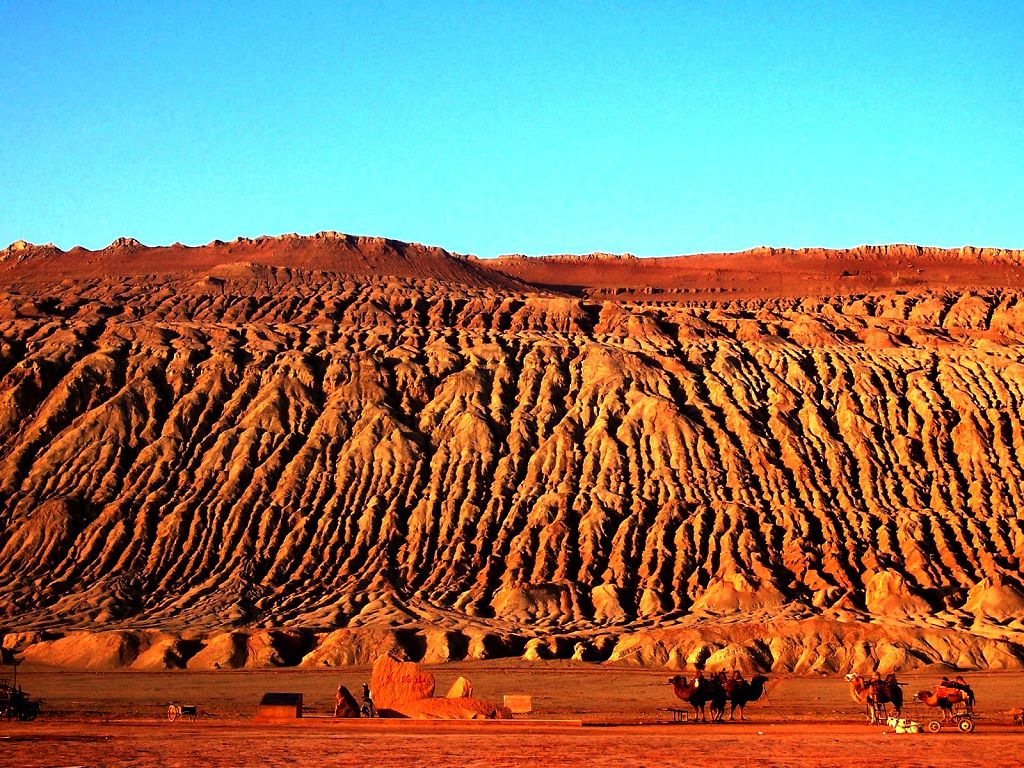The Flaming Mountain, located near Turpan in the Xinjiang Uygur Autonomous Region of China, is a famous natural landmark known for its striking red sandstone cliffs and extreme summer temperatures that give the mountain its fiery name. The mountain is part of the Tian Shan mountain range and stretches for approximately 100 kilometers (62 miles) along the northern edge of the Turpan Basin.
The Flaming Mountain is renowned for its unique geological formations, with layers of red sandstone and conglomerate rock creating a dramatic and colorful landscape. The mountain's steep cliffs, deep ravines, and rugged terrain make it a popular destination for outdoor enthusiasts, hikers, and photographers looking to capture its otherworldly beauty.
One of the most notable features of the Flaming Mountain is its scorching temperatures, which can soar to over 50 degrees Celsius (122 degrees Fahrenheit) during the summer months. The intense heat and lack of vegetation give the mountain a fiery appearance, with the red rocks seemingly glowing in the sunlight.
The Flaming Mountain holds a special place in Chinese folklore and history, with legends associating the mountain with the classic Chinese novel "Journey to the West" According to the novel, the Monkey King, Sun Wukong, caused havoc on the Flaming Mountain by extinguishing the fires that burned there, leading to a battle with the Bull Demon King.
In here, you can explore the scenic viewpoints, hike along the trails, and appreciate the rugged beauty of this iconic natural landmark.
The Flaming Mountain is a must-visit destination for those traveling to Xinjiang, offering a unique blend of natural beauty, geological wonders, and cultural significance that make it a truly unforgettable experience







